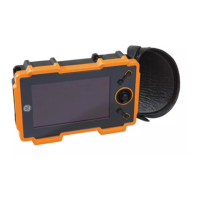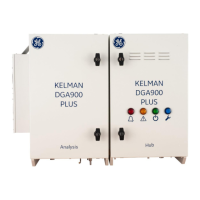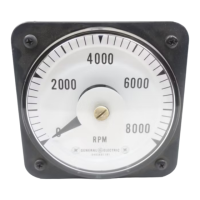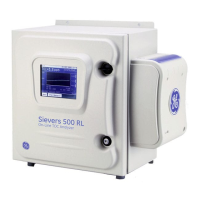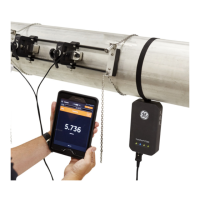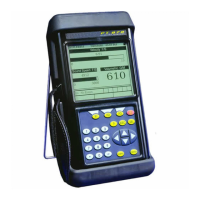Krautkramer USM 35X Issue 01, 04/2005 5-17
OperationCalibrating the USM 35X
5.7 Calibrating the USM 35X
Calibrating the display range
Before working with the USM 35X, you have to cali-
brate the instrument: you have to adjust the material
velocity and display range and allow for the probe delay
depending on the material and dimensions of the test
object.
To ensure a safe and proper operation of the USM 35X,
it is necessary that the operator be adequately trained
in the field of ultrasonic testing technology.
Below you will find some examples of common calibra-
tion methods for certain test tasks. In addition, the
USM 35X has a semiautomatic calibration function
which is described as Case B:
With unknown material
velocity
.
Choosing the measuring point
The sound path measurement in the calibration process
or in the subsequent echo evaluation process depends
on the choice of the measuring point which can be set
either to flank, to jflank or to peak in the USM 35X. In
principle, the peak measurement should be preferred
because the measured distances do not depend on the
echo height in that case. However, there are application
cases in which the flank measurement is either speci-
fied, or it must be applied for technical reasons, e.g. in
many tests using dual-element (TR) probes.
A Attention:
In any case, the setting of the measuring point must
always be identical for the calibration and for the subse-
quent test application. Otherwise measurement errors
might occur.
Krautkramer USM 35X Issue 01, 04/2005 5-17
OperationCalibrating the USM 35X
5.7 Calibrating the USM 35X
Calibrating the display range
Before working with the USM 35X, you have to cali-
brate the instrument: you have to adjust the material
velocity and display range and allow for the probe delay
depending on the material and dimensions of the test
object.
To ensure a safe and proper operation of the USM 35X,
it is necessary that the operator be adequately trained
in the field of ultrasonic testing technology.
Below you will find some examples of common calibra-
tion methods for certain test tasks. In addition, the
USM 35X has a semiautomatic calibration function
which is described as Case B:
With unknown material
velocity
.
Choosing the measuring point
The sound path measurement in the calibration process
or in the subsequent echo evaluation process depends
on the choice of the measuring point which can be set
either to flank, to jflank or to peak in the USM 35X. In
principle, the peak measurement should be preferred
because the measured distances do not depend on the
echo height in that case. However, there are application
cases in which the flank measurement is either speci-
fied, or it must be applied for technical reasons, e.g. in
many tests using dual-element (TR) probes.
A Attention:
In any case, the setting of the measuring point must
always be identical for the calibration and for the subse-
quent test application. Otherwise measurement errors
might occur.
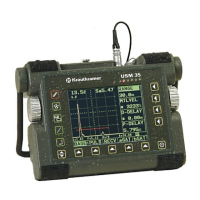
